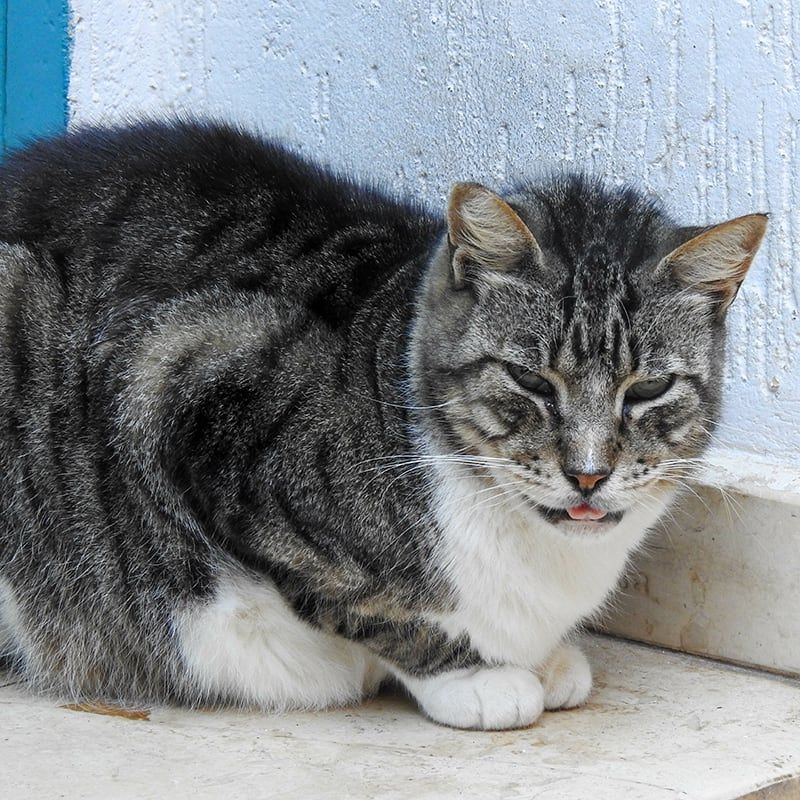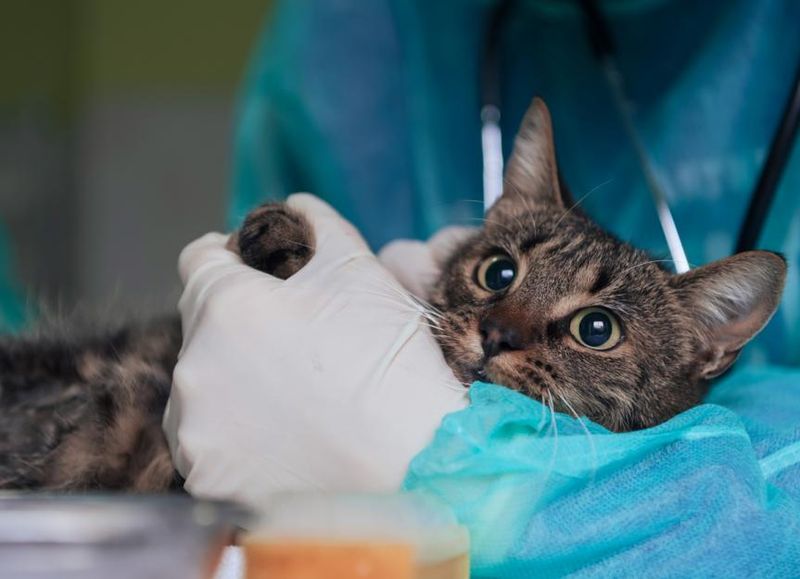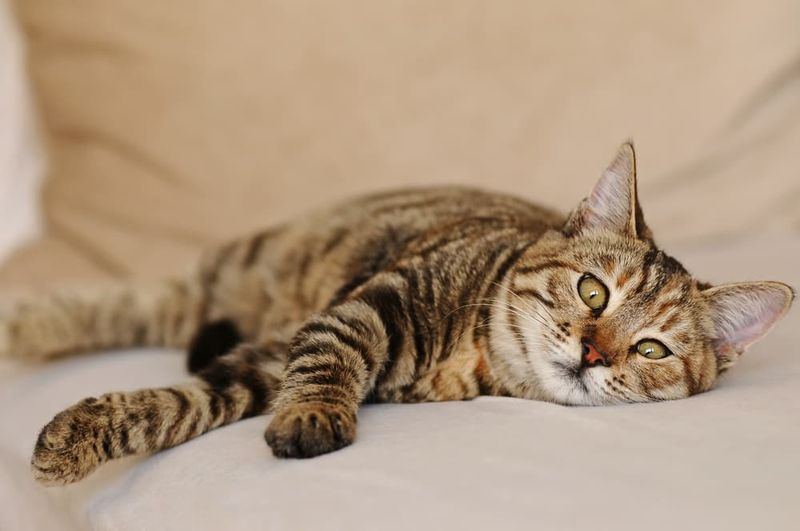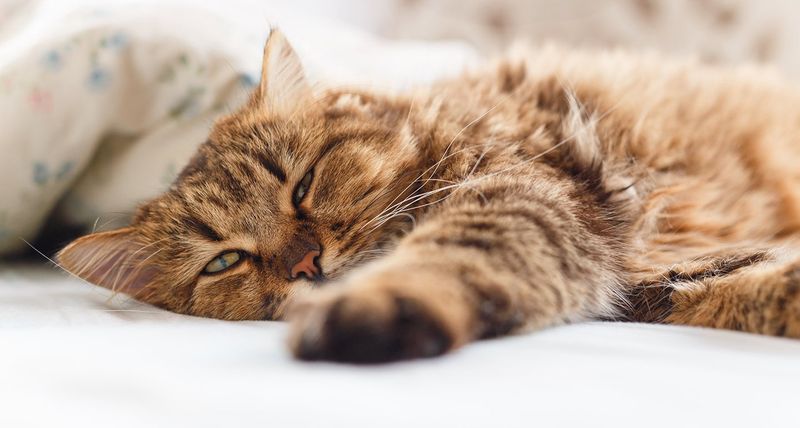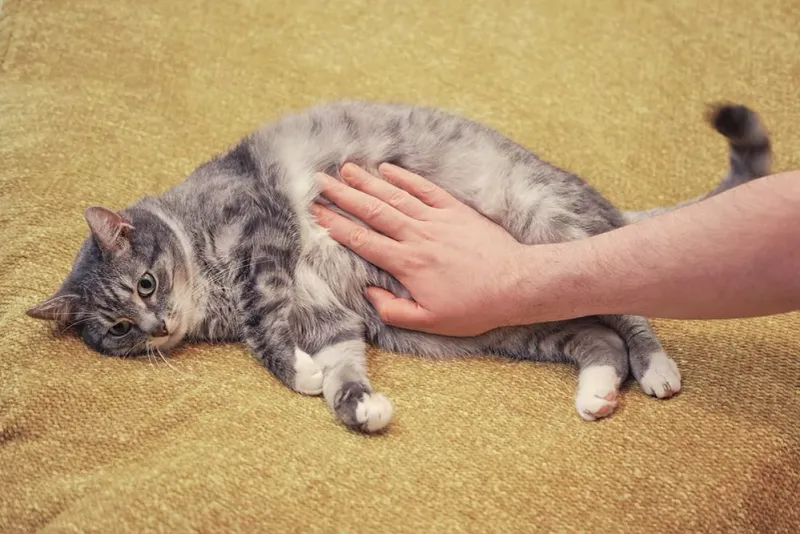📖 Table of Content:
Cats are naturally skilled at masking pain and discomfort, a survival instinct inherited from their wild ancestors. This behavior can make it difficult to spot health problems until they become severe. Subtle changes in behavior or appearance are often the only clues that something is wrong.
Recognizing early signs of illness is essential to keeping cats healthy and safe. Even minor symptoms can signal serious underlying conditions that require prompt treatment. Acting quickly can prevent complications and improve the chances of a full recovery.
Some symptoms should never be ignored, no matter how small they may seem. Sudden changes in appetite, breathing, or litter box habits can point to emergencies. Being aware of these warning signs can make all the difference in protecting a cat’s life.
1. Sudden Difficulty Breathing
Labored breathing in cats is never normal and always constitutes an emergency. Look for open-mouth breathing, extended neck posture, or noticeable heaving of the abdomen when breathing. Your cat might also show blue-tinged gums from lack of oxygen.
Respiratory distress can stem from asthma, heart failure, pneumonia, or something stuck in their airway. Cats with breathing problems often sit in a hunched position with their elbows pointed outward, trying to expand their chest cavity. Don’t wait to see if it improves – this is a true emergency requiring immediate veterinary intervention.
2. Complete Loss of Appetite
A cat that refuses food for more than 24 hours faces serious health risks. Hepatic lipidosis – a potentially fatal liver condition – can develop rapidly when cats stop eating. Unlike dogs who might skip meals occasionally, cats need regular nutrition. Watch for accompanying symptoms like lethargy, hiding, or vomiting.
Sometimes cats show interest in food but back away after sniffing, suggesting nausea or dental pain. Even if your cat seems otherwise normal, complete food refusal warrants prompt veterinary attention, especially in overweight cats who are particularly vulnerable to liver complications.
3. Urinary Blockage Signs
Male cats especially, can develop life-threatening urinary blockages that prevent them from passing urine. The telltale signs include frequent trips to the litterbox with little or no results, crying while attempting to urinate, and excessive licking of the genital area.
This condition becomes fatal within 24-48 hours as toxins build up in the bloodstream. Your cat might show abdominal pain when touched or adopt a hunched posture due to discomfort. A blocked cat is a true emergency – their bladder can rupture if not treated immediately, so rush to the vet if you notice these symptoms.
4. Sudden Paralysis or Inability to Walk
A cat that suddenly drags its back legs, can’t stand up, or shows weakness in limbs needs immediate medical attention. These symptoms often indicate a blood clot (saddle thrombus) that’s blocking blood flow to the legs – a painful, life-threatening emergency.
Affected cats typically cry out in pain and may have cold or blue-tinged back paws. Other potential causes include spinal injuries, severe trauma, or neurological conditions. Don’t wait to see if your cat “works it out” – this type of mobility loss requires immediate veterinary care and pain management.
5. Uncontrollable Vomiting or Diarrhea
Occasional hairballs are normal, but repeated vomiting episodes (more than twice in 24 hours) signal trouble. Dehydration develops rapidly, especially in kittens and senior cats. Look for dry gums, sunken eyes, or skin that stays tented when pinched.
Bloody vomit or diarrhea always warrants emergency care. Black, tarry stool indicates internal bleeding, while bright red blood suggests lower intestinal problems. Foreign objects, poisoning, or serious illnesses can cause persistent digestive upset. Don’t try home remedies – get veterinary help immediately if vomiting or diarrhea continues for more than a day.
6. Seizures or Convulsions
Witnessing your cat have a seizure is frightening. During an episode, cats typically fall on their side, paddle their legs, salivate excessively, and may lose bladder control. Even mild seizures (facial twitching, staring into space) require immediate attention.
First-time seizures are always emergencies. Multiple seizures within 24 hours (cluster seizures) or seizures lasting longer than 2-3 minutes constitute critical situations requiring immediate veterinary intervention. Potential causes include toxin exposure, brain tumors, infections, or epilepsy. Keep track of seizure duration and try to record video evidence for your veterinarian.
7. Traumatic Injuries
After incidents like falls, car strikes, or animal fights, cats need urgent veterinary evaluation—even if they seem unharmed. Internal bleeding or injuries can worsen without showing early signs. Subtle red flags include avoidance, stiff movement, rapid breathing, or pale-colored gums. Any limping, visible wounds, or swelling should be treated immediately.
Cats hit by cars often hide under furniture or in closets despite serious internal injuries. Don’t delay care even for minor-looking injuries – cats mask pain extremely well, and what looks minor could be life-threatening beneath the surface.
8. Ingestion of Toxic Substances
Exposure to household toxins requires immediate veterinary attention, even before symptoms appear. Common dangers for cats include lilies, antifreeze, rodent poison, and human medications like acetaminophen. Early warning signs of poisoning may include drooling, vomiting, confusion, or strange behavior, and some toxins take time to show effects, so prompt action is essential.
Never wait for symptoms to appear or try home remedies. Bring the packaging of suspected toxins to help your vet determine the appropriate treatment. Quick action dramatically improves survival rates in poisoning cases.

